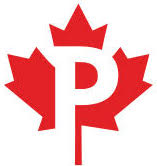
| Name | Value |
|---|---|
| Date of Issue | August 20, 2018 |
| Year | 2018 |
| Quantity | 910,000 |
| Denomination |
 PERMANENT™ (P). PERMANENT™ (P).Current monetary value: $0.92. |
| Perforation or Dimension | Simulated Perforation |
| Series | Birds of Canada |
| Series Time Span | 2016 - 2018 |
| Printer | Canadian Bank Note |
| Postal Administration | Canada |
| Condition | Name | Avg Value |
|---|---|---|
|
M-NH-VF
|
Mint - Never Hinged - Very Fine | View price |







This stamp belongs to the final issue of the three-year Birds of Canada series, which are illustrated by Canadian artist Keith Martin.
Three of the featured species in this issue are provincial birds. The brilliant blue Steller’s Jay, the provincial bird of British Columbia, is a common sight in the campgrounds and coniferous forests of Western Canada. The majestic snowy owl, Quebec’s provincial bird, makes its home on the Arctic tundra. The black-capped chickadee, the provincial bird of New Brunswick, is known for its cheery call and distinctive dark head. This completes a full set of provincial and territorial birds across the three issues, including Birds of Canada stamps from 2016 and 2017.
Of the final two birds, one is common while the other is among the world’s rarest. The iconic Canada goose, found across our country, is recognizable for both its noisy honk and the V-shape formed by flocks migrating south. As for the endangered whooping crane, the world’s largest self-sustaining population nests in Wood Buffalo National Park, which straddles the border between Alberta and the Northwest Territories.